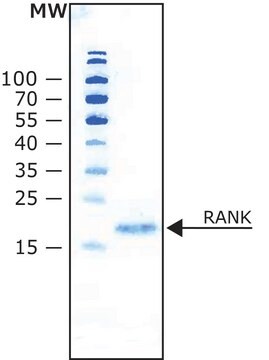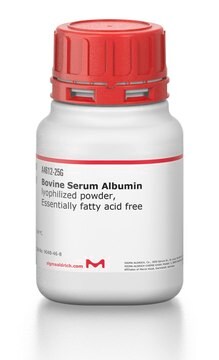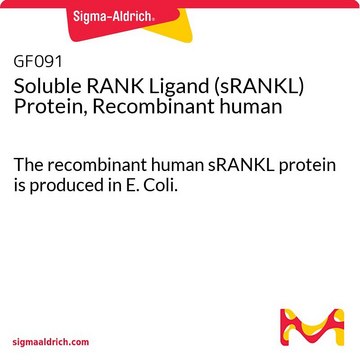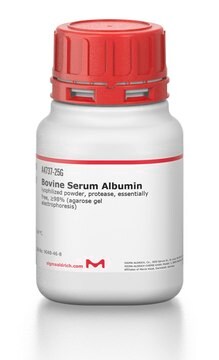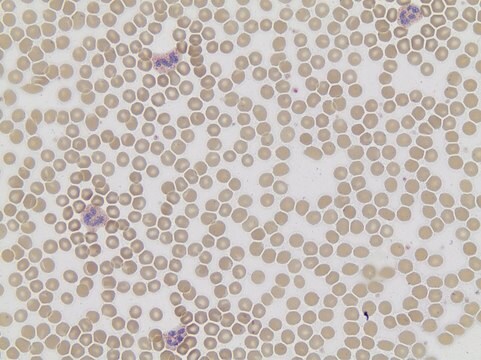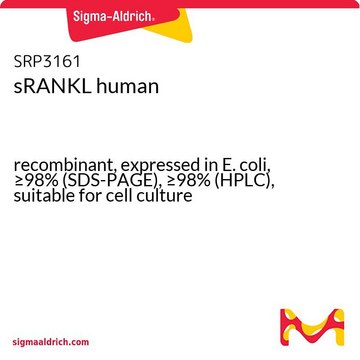T3573
RANK Ligand/TRANCE human
>90% (SDS-PAGE), recombinant, expressed in NSO cells, lyophilized powder
Sinónimos:
Osteoclast Differentiation Factor (ODF), Osteoprotegerin Ligand (OPGL), Receptor Activator of NF-KB Ligand (RANKL), TNF-related activation-induced cytokines (TRANCE)
About This Item
Productos recomendados
biological source
human
Quality Level
recombinant
expressed in NSO cells
assay
>90% (SDS-PAGE)
form
lyophilized powder
potency
1.5-7.5 ng/mL ED50
mol wt
glycolysylated recombinant product ~35 kDa by SDS-PAGE
calculated mol wt 23 kDa
packaging
pkg of 10 μg
storage condition
avoid repeated freeze/thaw cycles
impurities
endotoxin, tested
UniProt accession no.
application(s)
cell analysis
storage temp.
−20°C
Gene Information
human ... TNFSF11(8600)
General description
Application
Biochem/physiol Actions
Physical form
Analysis Note
Storage Class
11 - Combustible Solids
wgk_germany
WGK 3
flash_point_f
Not applicable
flash_point_c
Not applicable
ppe
Eyeshields, Gloves, type N95 (US)
Elija entre una de las versiones más recientes:
¿Ya tiene este producto?
Encuentre la documentación para los productos que ha comprado recientemente en la Biblioteca de documentos.
Nuestro equipo de científicos tiene experiencia en todas las áreas de investigación: Ciencias de la vida, Ciencia de los materiales, Síntesis química, Cromatografía, Analítica y muchas otras.
Póngase en contacto con el Servicio técnico